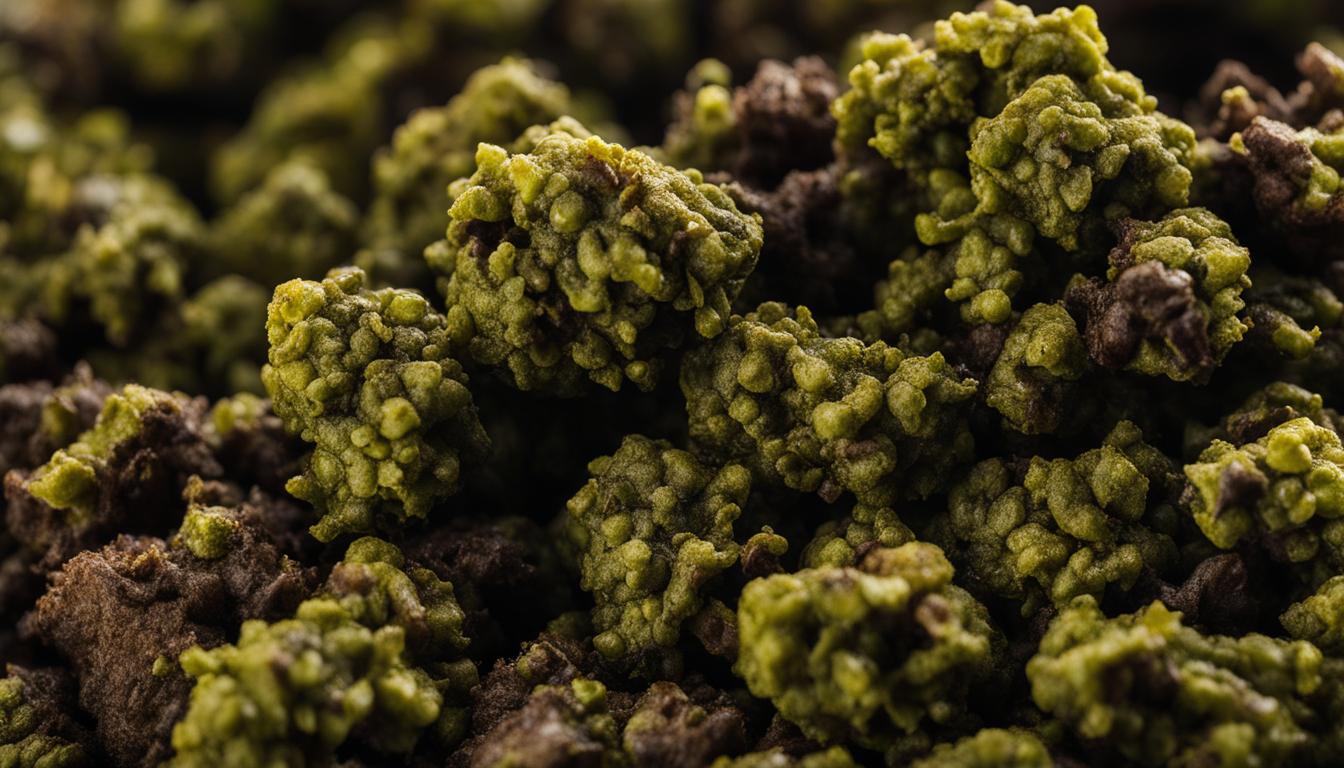Recognizing Skin Infections in Cats
Cat owners need to be vigilant in recognizing and addressing skin infections in their feline companions. By understanding the symptoms and causes of these infections, prompt veterinary care can be sought to alleviate any discomfort and prevent further complications.
Symptoms of Skin Infections
Skin infections in cats can present with a variety of symptoms. Some common signs to watch for include:
- Fur loss
- Redness or swelling
- Red bumps and/or scabs
- Pustules
- Scaly or flaky skin
- Wounds
- Unpleasant skin odor
These symptoms may indicate the presence of a skin infection in cats (PetMD). It’s important to note that these symptoms can also be associated with other skin conditions, so it’s crucial to consult a veterinarian for an accurate diagnosis.
Causes of Skin Infections
Skin infections in cats can have various underlying causes. Some common culprits include:
-
Bacterial infections: Staphylococcus bacteria are a common cause of bacterial skin infections, known as pyoderma, in cats. These infections can result from wounds or other skin irritations.
-
Fungal infections: Fungi like ringworm and yeast can lead to skin infections in cats. Ringworm is a highly contagious fungal infection that can cause circular patches of hair loss, while yeast infections often occur in warm and moist areas of the body.
-
Allergic infections: Allergic skin diseases in cats can stem from various factors, such as food, medication, airborne elements, insects, and irritating substances. Flea allergic dermatitis is a prevalent allergic skin disease in cats.
-
Parasitic infections: Skin parasites, including fleas, mange mites, ear mites, and chiggers, can infest cats and cause skin infections. These parasites can lead to intense itching, skin irritation, and discomfort.
It’s crucial to identify the underlying cause of the skin infection in order to provide appropriate treatment. Consulting a veterinarian is essential for an accurate diagnosis and effective treatment plan.
By recognizing the symptoms and understanding the causes of skin infections in cats, owners can take proactive steps to promote their feline’s well-being. Timely veterinary care and appropriate treatment can help alleviate discomfort and ensure a speedy recovery for the beloved furry companions.
Understanding Mange in Cats
Mange is a skin condition in cats caused by various types of mites. These microscopic parasites can infest a cat’s skin and lead to a range of symptoms. It’s important to recognize the different types of mange and their associated symptoms in order to seek appropriate treatment.
Types of Mange
-
Sarcoptic Mange: Cats infested with sarcoptic mange mites may exhibit intense itching that comes on suddenly. This itching can lead to small, solid bumps on the skin that may develop into thick, crusted sores. Initially, these sores typically appear on the abdomen, chest, ears, elbows, and legs. If left untreated, the condition can spread over the entire body, resulting in severe thickening of the skin, wrinkling, and crust build-up. In severe cases, affected cats may become emaciated and could die (Merck Veterinary Manual).
-
Notoedric Mange: Notoedric mange is caused by Notoedres cati mites. Cats with notoedric mange may experience severe itching, skin crusts, and hair loss, which initially appear on the ears, head, and neck but can spread over the entire body. Diagnosis involves inspecting skin scrapings for mites under a microscope. Treatment options may include spot-on or injectable therapies, lime-sulfur dips given 7 days apart, or a combination of these therapies.
-
Ear Mites (Otodectic Mange): Ear mites, or otodectic mange, caused by Otodectes cynotis mites, can lead to inflammation of the ear canal in cats. Symptoms may include head shaking, ear scratching, drooping external ears, and varying degrees of itching. Diagnosis involves inspecting ear discharge or ear debris for mites under a microscope. Treatment typically involves suitable medication for the ears or the entire body, as recommended by a veterinarian, along with instructions for ear cleaning.
-
Walking Dandruff (Cheyletiellosis): Walking dandruff in cats is caused by Cheyletiella blakei mites. It is characterized by scaling of the skin and infestation along the back, with intense itching being a common symptom. Diagnosis involves laboratory tests to identify mites or eggs. Treatment may include weekly dipping in an insecticide, spot-ons, sprays, injections, or oral drugs, under the guidance of a veterinarian.
-
Chiggers (Trombiculosis): Trombiculosis, a type of mange in cats caused by the parasitic larval stage of mites known as chiggers, can lead to redness, bumps, hair loss, skin crusts, and intense itching. Diagnosis is based on history and signs. Treatment may involve medications specific to killing these mites, with additional prescriptions for controlling secondary infections if severe itching has occurred (Merck Veterinary Manual).
Symptoms of Mange
The symptoms of mange can vary depending on the type of mite infestation. However, common symptoms of mange in cats include:
- Intense itching and scratching
- Skin redness and inflammation
- Hair loss, bald patches, or thinning of fur
- Crusty or scaly skin
- Sores, scabs, or lesions on the skin
- Presence of mites or eggs on the skin or in the ear canal
If you suspect that your cat may have mange, it’s crucial to consult with a veterinarian for a proper diagnosis and appropriate treatment. Early detection and treatment can help prevent the condition from worsening and alleviate your cat’s discomfort. For more information on the treatment of mange, refer to our section on diagnosis and treatment of mange.
Diagnosis and Treatment of Mange
Mange, a skin condition caused by mites, can cause discomfort and irritation in cats. Proper diagnosis and treatment are essential to alleviate the symptoms and promote the well-being of your feline companion. Let’s explore the veterinary diagnosis and treatment options for mange in cats.
Veterinary Diagnosis
To diagnose mange in cats, a veterinarian will conduct a thorough examination and may perform skin scrapings from the affected area. These skin scrapings are then examined under a microscope to identify the presence of mange mites. The specific type of mange mite can be determined through this process. For example:
- Sarcoptic mange mites may cause intense itching, small bumps on the skin, and the development of thick, crusted sores. The sores often appear on the abdomen, chest, ears, elbows, and legs. In severe cases, the entire body may be affected, leading to thickening of the skin, wrinkling, and crust build-up (Merck Veterinary Manual).
- Notoedric mange, caused by Notoedres cati mites, can result in severe itching, skin crusts, and hair loss. It typically starts on the ears, head, and neck before spreading to other areas of the body (Merck Veterinary Manual).
- Harvest mite infestations can cause intense itching, particularly during late summer or early fall. The mites may appear as intensely orange spots on the skin or can be identified through microscopic examination of a superficial skin scraping (VCA Hospitals).
Accurate diagnosis by a veterinarian is crucial to determine the specific type of mange and develop an appropriate treatment plan.
Treatment Options
There are several treatment options available for mange in cats, depending on the type and severity of the condition. Treatment may include:
- Medications: A veterinarian may prescribe medications, such as topical or oral treatments, to eliminate the mites and alleviate the symptoms of mange. These medications may include insecticides or parasiticides specifically designed to target the mites causing the infestation.
- Shampoos and Soothing Medicines: Special shampoos and soothing medicines may be recommended to provide relief for any sores or irritations on the cat’s skin. These products can help soothe the affected areas and promote healing.
It is important to follow the veterinarian’s instructions regarding the application and duration of treatment. Additionally, it may be necessary to treat the cat’s environment to prevent reinfestation.
Remember, only a veterinarian can accurately diagnose mange in cats and recommend the most suitable treatment options. If you suspect your cat has mange or any other skin condition, it is essential to seek prompt veterinary care to ensure the well-being and comfort of your furry friend.
Managing Harvest Mite Infestations
Harvest mite infestations can cause significant discomfort for cats. These tiny mites live on the surface of the skin and inject powerful enzymes that digest skin cells, leading to intense itching and self-inflicted wounds. Harvest mite larvae are commonly found around the ears and between the toes of cats (VCA Hospitals). In this section, we will explore the symptoms of harvest mite infestations and discuss diagnosis and prevention methods.
Harvest Mite Symptoms
When a cat is infested with harvest mites, several symptoms may arise. The most prominent symptom is intense itching, which can lead to self-inflicted wounds. Cats may experience skin lesions ranging from crusted spots to raw and moist bleeding areas. These lesions are typically found in areas where the mites are most active, such as around the ears and between the toes. It’s important to monitor your cat for any sudden onset of intense itching, particularly during late summer or early fall, as it may indicate the presence of harvest mites or similar ectoparasites like fleas.
Diagnosis and Prevention
To diagnose a harvest mite infestation in cats, a veterinarian will typically identify the mites either by visually inspecting intensely orange spots on the skin or through microscopic examination of a superficial skin scraping. If your cat exhibits symptoms of intense itching during the late summer or early fall, it’s crucial to seek veterinary attention for proper diagnosis and treatment (VCA Hospitals).
Currently, there are no licensed products specifically designed for the treatment of harvest mites in cats. However, many insecticides approved for flea control can effectively kill harvest mites when correctly applied. It’s important to choose a product with good residual activity and to follow the instructions provided. During harvest mite season, it is advisable to confine your cat to minimize exposure to infested areas. For more information on treatment options, refer to our article on chiggers on cats treatment.
Prevention plays a vital role in managing harvest mite infestations. People can also be affected by harvest mites, which are not spread from cats or dogs but from infested outdoor environments. To protect both your cat and yourself, it’s recommended to wear long pants and socks when walking in infested areas during late summer. By taking these precautions, you can reduce the risk of bringing harvest mites into your home and minimize the chances of infestation.
By understanding the symptoms of harvest mite infestations and following preventive measures, you can help manage and mitigate the discomfort experienced by your cat. Remember, if you suspect a harvest mite infestation, consult with a veterinarian for an accurate diagnosis and appropriate treatment options.
Identifying Allergic Skin Diseases
Allergic skin diseases in cats can be caused by various factors, including food, medication, airborne elements, insects, and irritating substances. It is essential for cat owners to be able to identify the causes and symptoms of allergic reactions in order to provide appropriate care and treatment.
Causes of Allergic Reactions
Allergic skin diseases in cats can be triggered by a variety of factors. Some common causes include:
-
Flea Allergic Dermatitis: Flea bites can lead to an allergic reaction in cats, resulting in itching, redness, and skin irritation. Flea allergic dermatitis is a common allergic skin disease in cats.
-
Airborne Allergens: Cats can be sensitive to certain airborne elements such as pollen, dust mites, and mold spores. Inhalation or contact with these allergens can cause allergic reactions, leading to skin problems.
-
Insect Bites: Insects like chiggers, fleas, and mites can bite cats, causing allergic reactions and skin irritation. Chiggers, in particular, can cause itching and discomfort in cats (PetMD).
-
Contact Allergens: Cats can develop allergic reactions when they come into contact with certain substances, including certain plants, cleaning products, fabrics, or chemicals.
Identifying the specific cause of an allergic reaction in a cat may require veterinary assistance. It’s important to consult a veterinarian for accurate diagnosis and guidance.
Symptoms of Allergies
Allergic skin diseases in cats can manifest in a variety of symptoms. Some common signs of allergies in cats include:
-
Excessive Scratching: Cats with allergies may scratch themselves excessively, often leading to hair loss and irritated skin.
-
Skin Redness and Inflammation: Allergic reactions can cause redness, inflammation, and swelling of the skin. The affected areas may appear irritated and may feel warm to the touch.
-
Biting and Licking: Cats may bite or lick specific areas of their body in an attempt to alleviate itching or discomfort caused by allergies.
-
Skin Lesions or Sores: Allergies can lead to the development of skin lesions, sores, or scabs on the cat’s body. These may result from self-inflicted scratching or from an allergic reaction to an external irritant.
-
Hair Loss: Constant scratching and biting can cause patches of hair loss in cats with allergies.
If you notice any of these symptoms in your cat, it’s crucial to seek veterinary attention for proper diagnosis and treatment. Your veterinarian can help determine the underlying cause of the allergic reaction and recommend appropriate treatment options.
Understanding the causes and symptoms of allergic skin diseases in cats is essential for effective management and treatment. By identifying the triggers and seeking veterinary care, you can help provide relief for your cat and improve their overall well-being.
Importance of Early Detection
When it comes to the health of our feline friends, early detection of any skin conditions or abnormalities is crucial. This holds true for identifying and treating symptoms of chiggers on cats. By monitoring your cat’s skin conditions and seeking prompt veterinary care, you can help ensure the well-being of your furry companion.
Monitoring Skin Conditions
Regularly monitoring your cat’s skin conditions is essential in detecting any signs of chigger infestation or other skin issues. Keep an eye out for the following symptoms that may indicate the presence of chiggers:
- Redness
- Bumps
- Hair loss
- Skin crusts
- Intense itching
If you observe any of these symptoms on your cat’s skin, it is important to take immediate action. Chiggers can cause discomfort and may lead to self-inflicted wounds if left untreated. By being vigilant and proactive, you can catch the infestation in its early stages and prevent the condition from worsening.
Prompt Veterinary Care
When you notice any signs of chiggers or other skin problems on your cat, seeking prompt veterinary care is crucial. A veterinarian will be able to diagnose the specific condition and provide appropriate treatment options. In the case of chigger infestations, the veterinarian may prescribe medications that target and eliminate the mites. If severe itching has occurred, the veterinarian may also prescribe medications to control secondary infections and offer relief from discomfort.
Remember, early intervention is key to effectively managing chigger infestations and minimizing the impact on your cat’s health. Delaying veterinary care can lead to complications and more severe symptoms. Therefore, if you suspect a chigger infestation or notice any concerning skin conditions on your cat, don’t hesitate to schedule a visit to the veterinarian.
By monitoring your cat’s skin conditions and seeking prompt veterinary care, you can play a vital role in maintaining your cat’s skin health and overall well-being. Regular check-ups and consultations with a veterinarian are essential for early detection, accurate diagnosis, and appropriate treatment of any skin issues. Your furry friend will thank you for your attentiveness and care.






